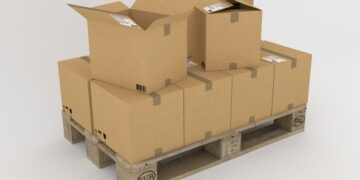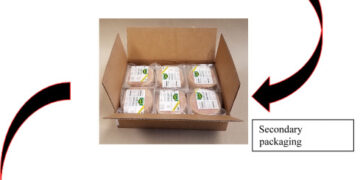In recent years, the issue of sustainable packaging has become increasingly important as the world becomes more aware of the negative impact of packaging waste on the environment. Sustainable packaging is packaging that is designed to be environmentally friendly, socially responsible, and economically viable. It is designed to reduce the negative impact on the environment throughout its life cycle, from production to disposal. In this article, we will discuss sustainable packaging solutions and how they can help reduce the environmental impact of packaging.
Why is Sustainable Packaging Important?
Packaging waste is a major problem for the environment, with landfills being filled with non-degradable packaging materials. This waste is not only unsightly but also poses a threat to the environment, wildlife, and human health. Sustainable packaging can help address this issue by reducing the amount of packaging waste that ends up in landfills. It can also reduce the carbon footprint of packaging by reducing the energy used in the production and transportation of packaging materials.
Sustainable Packaging Solutions
Biodegradable Packaging: Biodegradable packaging is packaging that can be broken down by natural processes such as bacteria, fungi, and sunlight. This type of packaging is made from renewable materials such as plant fibers, starch, and cellulose. Biodegradable packaging can help reduce the amount of packaging waste in landfills and reduce the carbon footprint of packaging.
Recyclable Packaging; Recyclable packaging is packaging that can be collected, processed, and reused to create new products. This type of packaging is made from materials such as paper, cardboard, glass, and plastic. Recycling packaging can help reduce the amount of packaging waste in landfills and reduce the carbon footprint of packaging.

Reusable Packaging: Reusable packaging is packaging that can be used multiple times before being discarded. This type of packaging is made from durable materials such as metal, glass, and plastic. Reusable packaging can help reduce the amount of packaging waste in landfills and reduce the carbon footprint of packaging.
Compostable Packaging: Compostable packaging is packaging that can be broken down by natural processes into compost, a nutrient-rich soil conditioner. This type of packaging is made from organic materials such as cornstarch, sugarcane, and potato starch. Compostable packaging can help reduce the amount of packaging waste in landfills and provide a valuable resource for agriculture.
Minimalist Packaging: Minimalist packaging is packaging that uses the least amount of materials possible to package a product. This type of packaging is often used for products that are sold in bulk or that do not require extensive packaging. Minimalist packaging can help reduce the amount of packaging waste in landfills and reduce the carbon footprint of packaging.
Renewable Packaging: Renewable packaging is packaging that is made from renewable resources such as bamboo, hemp, and other plant-based materials. This type of packaging is designed to reduce the environmental impact of packaging by using sustainable materials that can be replenished over time.
Benefits of Sustainable Packaging
Reduces Waste: Sustainable packaging helps reduce waste by using materials that can be reused, recycled, or composted. This helps reduce the amount of packaging waste that ends up in landfills, reducing the negative impact on the environment.
Reduces Carbon Footprint: Sustainable packaging helps reduce the carbon footprint of packaging by using materials that are more energy-efficient to produce and transport. This helps reduce greenhouse gas emissions and the negative impact of packaging on the environment.
Cost-Effective: Sustainable packaging solutions can be cost-effective in the long term by reducing waste and transportation costs. By using materials that are renewable and can be reused or recycled, companies can reduce their overall packaging costs.
Positive Brand Image: Sustainable packaging solutions can help companies create a positive brand image by demonstrating their commitment to the environment and sustainability.
Consumers are increasingly aware of the negative impact of packaging waste on the environment and are looking for brands that are environmentally responsible. By using sustainable packaging solutions, companies can attract and retain environmentally conscious customers and improve their reputation.
Challenges of Sustainable Packaging
While sustainable packaging solutions offer many benefits, they also pose some challenges for companies. One of the main challenges is the cost of sustainable materials, which can be higher than traditional materials. However, this cost can be offset by the long-term cost savings of reducing waste and transportation costs.

Another challenge is the lack of infrastructure for recycling and composting in many areas. This can make it difficult for companies to use sustainable packaging solutions that require specialized disposal methods. However, companies can work with local governments and organizations to improve recycling and composting infrastructure in their area.
Finally, sustainable packaging solutions may not always be suitable for all types of products. For example, some products may require more protective packaging to ensure they arrive safely to customers. In these cases, companies can work to find a balance between product protection and sustainable packaging solutions.
Conclusion
Sustainable packaging solutions offer many benefits to the environment, society, and the economy. By reducing waste and greenhouse gas emissions, sustainable packaging can help address the growing problem of packaging waste and its negative impact on the environment.
While there are some challenges to implementing sustainable packaging solutions, companies can work to overcome them and reap the benefits of a more sustainable future. By choosing sustainable packaging solutions, companies can create a positive brand image, attract environmentally conscious customers, and contribute to a healthier planet.















